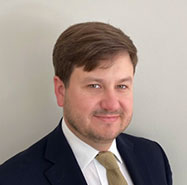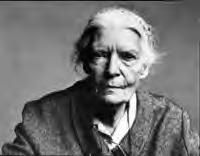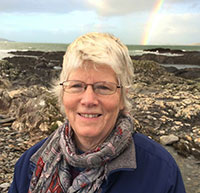 SappCHARLOTTE — Faced with tremendous growth and the increasing complexity of construction projects, the Diocese of Charlotte has created a new construction management process to enhance collaboration and strategic investment in capital projects across the diocese.
SappCHARLOTTE — Faced with tremendous growth and the increasing complexity of construction projects, the Diocese of Charlotte has created a new construction management process to enhance collaboration and strategic investment in capital projects across the diocese.
The process brings together all stakeholders from parishes, schools and the diocese who are involved in construction projects costing $1 million or more to hone plans early in the process, so that everyone is working toward a common vision.
“We’ve seen so much growth in our diocese that it’s critical for us to ensure our building program will efficiently and effectively accommodate our needs for new schools, churches and other projects,” said Monsignor Patrick Winslow, vicar general and chancellor of the diocese, and the architect of the new approach. “A key element is for parishes, schools and the diocese to get aligned early and check-in often so we can produce the best possible result and make the best use of the Church’s resources.”
The new process promotes the engagement of stakeholders and requires teamwork from the initial project concept through completion of construction and dedication of a space. The diocese and the parish or school involved form a single team to execute plans established during a strategic planning process.
As part of the new approach, the diocese restructured and divided the growing responsibilities of its properties staff to create two departments:
> The Office of Construction will oversee major building projects and offer project management services at the diocese’s 92 parishes and missions, 20 schools, and diocesan facilities.
> The Office of Properties will handle real estate acquisition and disposition, small to mid-size renovations and construction, and maintenance and preservation of an array of schools and other diocesan properties.
Emmett Sapp, who served as construction manager for the Properties Office for more than four years, will lead the new Construction Office. He will oversee two project managers as his team assists pastors, Catholic schools administrators, and capital project stakeholders through the streamlined process to plan and execute large capital projects.
Most recently, Sapp and his team oversaw the completion of the $6.4 million Fulford Athletic & Activity Center at Christ the King High School in Huntersville.
Sapp is excited about his new role and the promise of the diocese’s new approach. “We work to establish a common vision from the beginning, before we start spending a lot of time, effort and financial resources on a project,” he said.
The diocese began dissecting and rebuilding the process nearly two years ago, with input from stakeholders across the diocese.
“With the committed leadership and personal attention of Monsignor Winslow, the team dedicated significant time and attention toward improving project outcomes and experiences by developing a process that is very structured and clear – so parishes and schools will know, at any time, where their projects stand and what next steps are,” Sapp said.
Monsignor Winslow likens the process to “a directory at a mall. I want to be able to look at the map and say, ‘I am here,’ at any given moment in the process.”
Sapp is part of the team that developed a new Capital Construction Team handbook for use by parishes currently considering capital projects. St. Joseph Parish in Asheboro, Holy Spirit Parish in Denver and Our Lady of the Mountains Mission in Highlands are all using the handbook to guide their ongoing capital projects.
The team will finalize the handbook this summer after receiving feedback from those pilot parishes.
Over the past four and a half years, the diocese has assisted in executing 28 major capital projects totaling around $76 million. Ten projects with a combined cost of $22 million are expected to be completed in 2023. Sapp is also tracking 33 projects with an expected cost of $161 million with completion dates beyond 2023.
“Our goal in the Construction Office,” Sapp said, “is to use our professional expertise to serve the needs of our growing Catholic community in alignment with the bishop’s vision and local pastoral leadership.”
— SueAnn Howell
 DayCHARLOTTE — Fierce. Heroic. Provocative. Pious. Granny.
DayCHARLOTTE — Fierce. Heroic. Provocative. Pious. Granny.
These are just some of the words Kate Hennessy uses to describe her late grandmother, Dorothy Day – Catholic activist, journalist and Catholic Worker Movement co-founder.
Hennessy delivered St. Peter Parish’s 23rd annual Kennedy Lecture Jan. 28, speaking via Zoom from her home in Ireland to an audience of over 120 people. She shared personal memories of growing up with Day, working alongside her and other family members at the Catholic Worker farm in upstate New York and the Catholic Worker house in New York City.
Day died in 1980, when Hennessy was 20, yet her grandmother’s Catholic witness remains alive.
“When you encountered Dorothy Day, you spent the rest of your life wondering what just hit you,” Hennessy said.
“She was so powerful,” Hennessy recalled, but not in a political sense. “Her power really was the power of presence, it’s the power of authenticity. What you saw was who she was.”
Day stood nearly 6 feet tall, with piercing blue eyes and a no-nonsense attitude, Hennessy said.
“She was provocative, she could really challenge people,” Hennessy said, listing what she calls the “Nine Provocations of Dorothy Day.”
“If she’s not scaring the bejeezus out of you, then you’re not listening to her.”
DAY’S CONVERSION AND VOCATION
Day converted to Catholicism shortly after the birth of her daughter Tamar, Hennessy’s mother.
Day had grown up nominally Christian and became an Episcopalian as a teenager, but as a young adult lived a bohemian lifestyle and became a radical activist – campaigning for women’s suffrage and against World War I, befriending anarchists and communists, going on hunger strikes and being thrown into jail.
Then in her 20s, Day had a “physically brutal” abortion in a futile attempt to save a relationship, and she feared she was sterile.
So Day saw this new pregnancy as a miracle and didn’t want to squander it, Hennessy said. “She wanted to live a life that was full of meaning, that was sacramental.”
While pregnant, Day began exploring Catholicism and attending Mass. Tamar was born in 1926, and the next year she had Tamar baptized. Day followed suit in 1928.
Day’s newfound Catholic faith and the teachings of Jesus became the anchor of her life’s work.
That work included opening soup kitchens and farms in New York to feed the growing number of poor during the Depression, protesting wars, lambasting Nazism and antisemitism, marching for civil rights with Dr. Martin Luther King Jr., picketing for farm workers’ rights with Cesar Chavez, and opposing nuclear weapons. She also kept up a furious pace of writing.
“Prayer, the sacraments and the works of mercy fueled her,” Hennessy said.
DAY AND SAINTHOOD
After the U.S. bishops’ enthusiastic endorsement in 2012, the Vatican is considering Day for sainthood. Pope Benedict XVI has cited her as “a model of conversion,” and Pope Francis has praised her “passion for justice.”
Day herself disdained being called a saint, famously remarking, “Do not call me a saint. I don’t want to be dismissed so easily.”
Hennessy said Day adored the saints, especially St. Therese of Lisieux and St. Teresa of Avila. But being labeled a saint puts someone on a pedestal – out of reach and avoidable.
“Don’t put me up there and walk away,” Hennessy said Day would insist. “For us to honor her, we cannot dismiss her. We really have to be brave. We have to look inwards: who are we and what is our work?”
DAY, BEAUTY AND LOVE
 HennessyDay introduced Hennessy to one of her favorite writers, Fyodor Dostoevsky. Dostoevsky’s words “the world will be saved by beauty” was one of Day’s favorite quotes, and Hennessy made it the title of her 2017 biography of Day.
HennessyDay introduced Hennessy to one of her favorite writers, Fyodor Dostoevsky. Dostoevsky’s words “the world will be saved by beauty” was one of Day’s favorite quotes, and Hennessy made it the title of her 2017 biography of Day.
Day loved literature, art and music, especially opera, Hennessy said, with a childlike joy. Even in her work amid dire poverty and injustice, “Granny had a very heightened sense of finding beauty wherever she could.”
“Beauty is the language of God, it is the language of Love, it is what opens our hearts,” Hennessy said. “When we open our hearts to it – when we allow it in fully, without protecting ourselves – we will be transformed.”
Day was called – and calls us – “to see people as they really are, as God sees them.”
“We are saved by beauty every day, but we’re just not paying attention,” Hennessy said.
“This way of perceiving the world fully engaged – not judgmental, not rejecting – this was something my grandmother was able to do, even up to her death.”
Asked how people should view her lasting legacy, Hennessy said Day would reply, “Stop it. Look to yourselves. Do the work.”
“Respond to the need at hand,” Hennessy said. “One of her favorite questions was: ‘What can we do in the here and now?’” – especially in the face of seemingly insurmountable problems.
Visit people in prisons, hospitals and migrant labor camps. Feed the hungry, house the homeless, clothe the naked, Hennessy said. “Find what moves you.”
— Patricia L. Guilfoyle
More online
At www.stpeterscatholic.org/kennedy-lecture: Watch the recorded 2023 Kennedy Lecture, hosted by St. Peter Parish and sponsored by Thomas and Richard Kennedy in memory of their parents, Keith and Joan Kennedy
The Nine Provocations of Dorothy Day
1. Make yourself deeply uncomfortable.
2. Follow your conscience. Listen to that still, small voice within.
3. Find your vocation. You will know your vocation by the joy it brings you.
4. Face your fears.
5. Make friends with failure. We all fail, but we have to persevere.
Perseverance is one of the greatest virtues.
6. Open yourself up to beauty. Let it transform you.
7. Don’t do it alone. Create a community through love.
8. Take delight in the humorous. Laugh at yourself.
9. Pray – abundantly, extravagantly, and in any way you can.

